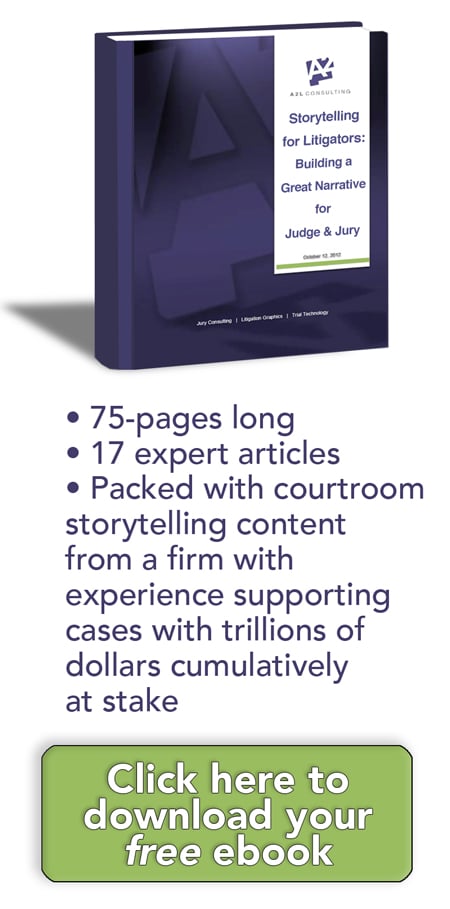 by Ken Lopez
by Ken Lopez
Founder & CEO
A2L Consulting
The most important duty of every trial lawyer, in every type of trial, is to convince a jury or judge on an emotional level. Appellate cases can and should be decided on the basis of an intellectual consideration of the law, but a wealth of psychological studies and generations of trial practice make it clear that the only way to win at trial is to be emotionally convincing. And the way to do that is to tell a compelling story. Stories are the way in which people learn and the way in which they organize reality.
Law school prepares attorneys pretty well to build a case around the law – but it doesn’t always prepare them to develop their skills of persuasion. After all, most of what law students read are appellate decisions, divorced from the human reality that spawned the dispute in the first place. Trial lawyers and trial consultants live in a very different world.
Sitting in a jury box and analyzing legal evidence is one of the most complicated things that many jurors will ever do. The job of the trial lawyer, accompanied by trial consultants, paralegals, and others is to make the process as easy and entertaining as possible. Hook them early and keep them engaged.
At A2L Consulting, we have just put together our latest e-book, entitled “Storytelling for Litigators: Building a Great Narrative for Judge and Jury.” This e-book will explain the concepts of building a persuasive story for jurors, when to start, how to go about it, and how to use your story in the courtroom.
After all, a story is not a simple recitation of information and facts in chronological order. It is a tale of character-rich events told to evoke an emotional response in the listener. Like a drama, a story is often split into five parts: the introduction, where the characters are introduced and the scene is set; the rising action, where the conflict is identified; the climax, where the protagonist faces a challenge and his or her situation is either clearly improved or worsened; the falling action, in which the conflict diminishes and the protagonist is either winning or losing, and the denouement, which, hopefully, brings a satisfying end to the tale.
A litigation story is no different. In an opening statement, an attorney should introduce his or her characters and should provide a flow of action that culminates in a to-be-desired ending. Each witness and each document to be introduced should take a place in the narrative that is clear to the jurors. For example, a great piece of demonstrative evidence would be a trial graphic or exhibit that makes some portion of a complex case immediately easier to understand.
The e-book is recommended for anyone whose job involves seeing the inside of a courtroom on a regular basis. It features such topics as “Six Reasons That the Opening Statement is the Most Important Part of the Case,” “Five Keys to Telling a Compelling Story in the Courtroom,” “Ten Videos to Help Litigators Become Better at Storytelling,” and “Sixteen Trial Presentation Tips You Can Learn From Hollywood.”
As a real-life example, the e-book examines in detail the recent high-stakes patent case between Apple and Samsung and takes a close look at the trial exhibits that both sides introduced, from the point of view of how convincing they were likely to be to a jury.





Leave a Comment